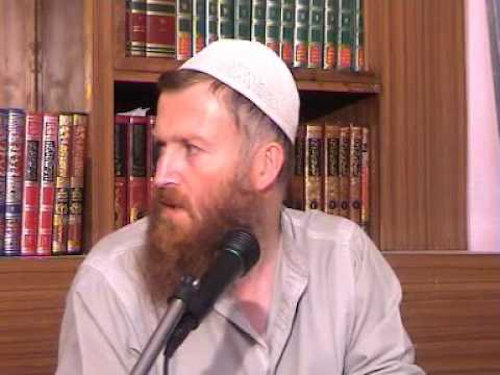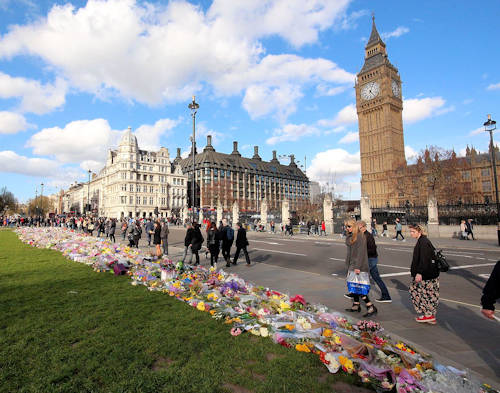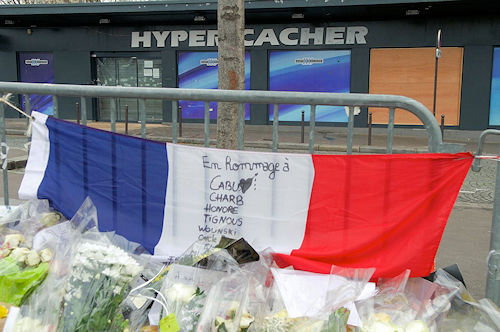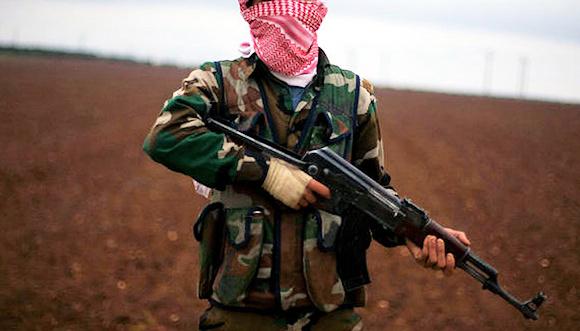The recent attacks that hit some of the best-known European capitals show a change in the strategy of Islamist terrorism which seems to have further reduced the cost / benefit ratio of each individual action. Young people, in some cases already known to justice, have acted unexpectedly, using light weapons and improvised means, to sow panic among the crowd. Some analysts have seen a downturn in the results achieved by each individual attack, but the terrorists have succeeded in their primary purpose, undermining the security systems of the countries affected. This, in itself, is already an excellent result: an attempt like that of London, apparently ineffective, has however paralyzed an entire city, causing injuries and serious repercussions on the daily life of Londoners. If it is true that the actions claimed by the Islamic State have not had the desired effect, it is equally significant that Westerners continue to not have the antibodies necessary to metabolize this type of aggression. If compared to the more recent past, there is no doubt that the operation of the terrorist cells is actually going through a decreasing parabola: both due to the serious defeats suffered on the battlefields, and to the increasingly restrictive measures imposed by the police. But it would be a serious mistake to lower the guard: it is well known, in fact, that the tactics of terrorism follow the evolution of the security systems implemented by the state.
Violence and religious purism
All the attacks that have occurred up to now have been claimed by the Islamic State, which, in grave distress on the Syro-Iraqi front, has opened a subtle line of fire on the roads of Western capitals. The question is whether or not ISIS has operational control over each attack, or - a more likely option - takes only an opportunistic ideological paternity. Whatever the role played by Daesh, it is good to underline how these episodes follow a common strategy that divides the material authors of the raids from the definition - more and more uncertain - of "solitary wolves". The guidelines of this modus operandi they are not new at all, but above all they do not belong to the Islamic State, but to al-Qaeda.
 In November 2005 a targeted action by the Pakistani police from Quetta led to the arrest of one jihadi whose somatic features were distinguished from others by a thick red beard. His name, Mustafa Setmariam Nasar alias Abu Musab al Suri was at the top of the list of middle-world intelligence researchers who had identified him as one of Osama bin Laden's most ruthless theorists. A Syrian of origin, Mustafa married a European, acquiring Spanish citizenship and then moving to London, in the suburbs of Neasden. After years of clandestinity and silence, his name returned to the spotlight during the investigations after the underground attack: not as a direct bomber, but as an organizer and inspiration1. Al Suri's curriculum was similar to that of many al-Qaeda militants: a guerrilla warrior in Afghanistan during the Soviet invasion and, from 1988, a close friendship with Osama bin-Laden whose opinions diverged over some strategic choices and doctrinal visions. Al Suri did not approve of the theatricality of the Saudi sheikh, even going so far as to blame the action against the American Towers. On this point, the jihadist vision of al Suri coincided with that of another criminal, Iraqi Abu Musab al-Zarqawi, also a follower of the Palestinian Abu Muhammad al-Maqdisi2. Once the Taliban regime collapsed, Abu Musab returned to the shadows, dedicating all his time to writing The Global Islamic Resistence Call posted on the internet in November of the 2004.
In November 2005 a targeted action by the Pakistani police from Quetta led to the arrest of one jihadi whose somatic features were distinguished from others by a thick red beard. His name, Mustafa Setmariam Nasar alias Abu Musab al Suri was at the top of the list of middle-world intelligence researchers who had identified him as one of Osama bin Laden's most ruthless theorists. A Syrian of origin, Mustafa married a European, acquiring Spanish citizenship and then moving to London, in the suburbs of Neasden. After years of clandestinity and silence, his name returned to the spotlight during the investigations after the underground attack: not as a direct bomber, but as an organizer and inspiration1. Al Suri's curriculum was similar to that of many al-Qaeda militants: a guerrilla warrior in Afghanistan during the Soviet invasion and, from 1988, a close friendship with Osama bin-Laden whose opinions diverged over some strategic choices and doctrinal visions. Al Suri did not approve of the theatricality of the Saudi sheikh, even going so far as to blame the action against the American Towers. On this point, the jihadist vision of al Suri coincided with that of another criminal, Iraqi Abu Musab al-Zarqawi, also a follower of the Palestinian Abu Muhammad al-Maqdisi2. Once the Taliban regime collapsed, Abu Musab returned to the shadows, dedicating all his time to writing The Global Islamic Resistence Call posted on the internet in November of the 2004.
The 1600 pages written by the Syrian represented a military compendium inspired by the most extreme speculations of the jihadism salafita: "who are primarily military strategists, and whose main concern is political outcome, not doctrinal purity"3.
Abu Musab al Suri disdained to be called a clerico, preferring the label most suited to him as a strategist of terrorism, whose interest focused mainly on the political implications of Jihad. This interpretation, strictly martial and free from any mystical vision, clashed with the teaching of many religious who criticized him to divert the attention of the combatants from the real meaning of their mission.
Brynjar Lia, author of a biography dedicated to the terrorist, underlined a conflict between Salafi purists and al-Suri himself, to whom - contrary to bin Laden - he did not care about clerical legitimacy, judging it a priori hostile and misleading: "The clerics mislead the mujahidin and turned them away from the battlefieldby preaching loyaltyto the corrupt rulers who had allied themselves with the infidels"4. After the Taliban fell, the allied forces recovered six videotapes recorded by al-Suri while giving theoretical lessons of Jihad in his training camp at al Ghuraba. According to some witnesses the Syrian was a theoretician, nevertheless he had the reputation of being a severe and violent instructor: "I trained in it [at the Ghuraba] many Arabs and non-Arabs. Infidels and apostates have tasted the strenght of some of my trainees in central Asia ..."5.
 Individual terrorism
Individual terrorism
According to al-Suri's thinking, the terrorist groups of the past had essentially failed their mission, as they were dependent on an internal hierarchical and centralized structure. Al-Qaeda itself, at the beginning, presented similar characteristics, later modified because of the war contingencies. Al-Suri suggested a more ductile, minimal and forward-looking model based on individual terrorism and small cells. In the pages of his treatise The Global Islamic Resistence Call the author pointed out the potential of these operations defined as "spontaneous", apparently without any connection between them: "have put the local and international intelligence in a state of confusion"6. Moreover, operating in isolation was a further advantage, since it made the terrorists less vulnerable to the thick meshes of the investigators: if one cell was discovered, another was immediately ready to act undisturbed. From the media point of view this type of attacks obtained a double result: they triggered the fear among the people, but above all they encouraged other frustrated Muslims to emulate the enterprises of their coreligionists. "The issue of individual jihad"- explained al-Suri - was a great da'wah success. It has become a great influence on awakening the spirit of jihad and resistance within the ummah, and it turned into unknown individuals [...] into becoming symbol of a nation"7. Theories of individual terrorism coincided with the new demands of al-Qaeda which, after the September 11, necessarily had to restructure into a more flexible and decentralized body. The same term al-Qaeda, "the base", lost its original meaning, becoming a brand, a principle and an operative method8. Abhijnan Rej's essay, The Strategist: How Abu Mus'ab al-Suri Inspired ISIS, he clarified once and for all the difference between the definition of "lone wolf" compared to the profile of the bomber in the text of al-Suri. The bombers in Paris, Brussels, London or Barcelona - according to the principles of The Global Islamic Resistence Call - they belonged to decentralized cells, but they all responded to what Rej calls a "call" or rather an "appeal" to join a much broader system with: "a common aim, common name, common doctrinal jihadi program and a comprising educational program"9. To continue to define them as "solitary wolves" would therefore be a mistake that could mislead the real purposes of each individual action and the possible developments.
If we schematize the theory of al-Suri (imagined by Rej as a graph of concentric circles) we notice how in the center there actually exists a directing nucleus connected to a second circle of decentralized units which in turn come into connection, through bay'at (loyalty oaths), with a third ring, released and separated (logistically) from all the others. The autonomous units that gravitate outside are those that: "are in contact with a militant group via online communication"10.
According to al-Suri, the faithful had the sacred duty to strike every enemy country, even as a form of reprisal: "The basic idea is that any operation which kills civilians or harms faithful muslims, or any actions performed by troops of the country at war, should be met with an equally deterring action"11.
Open Front

Another pivot around which the jihadist military theory of al-Suri and that of the open front revolves, or "Open Front jihad". This is nothing but a very extensive battleground (Iraq, Afghanistan or Syria) in which to trap the enemy to force him to a laborious and wasteful asymmetric war. Only in this way the jihadists can be right of a technologically superior enemy: "It is not possible"- argumenta al-Suri -"for a few jihadi organizations, or for tens or hundreds of mujahidin and there, to deter this fierce international attack ... and their collaborators"12. Moreover, Al-Suri outlined the ideal morphological characteristics of a terrain to be fought on: broad, but above all with controllable points of access and places where the fighters could not be besieged or encircled.
For obvious reasons the doctrine of the Open Front is combined with that of individual terrorism. The al-Qaeda strategist recognizes in the military front an optimal training ground for all those who, afterwards, wish to fight alone or to form small cells. The case of the Foreign Fighters perfectly exemplifies the practice suggested by al-Suri: "Some elements in the field of recruitment and the building of cells can benefit from the Open Fronts, by recruiting some of the elements coming to fight jihad, selecting them, and sending them to work in their countries, or wherever they are able to operate in the field of individual or cell terrorism"13.
In light of what Al-Suri exposes, we can say that although jihadist attacks are losing spectacularity, they remain an unpredictable and destabilizing factor. Not to mention that al-Suri himself has always been a staunch supporter of the use of weapons of mass destruction. The bin Laden critique of the attack on the Twin Towers concerned just this, that is, the number of casualties which, if they had been used chemical weapons, would have been a thousand times higher: "I feel sorry because there were no weapons of mass destruction in the United States that attacked New York and Washington on 9 / 11. Bush for a second term We might have been relieved of the biggest number"14.
The Islamic State is heading toward a humiliating military defeat and this would deprive the jihadists of an important recruitment basin. One of the probable consequences of this collapse would be the massive re-entry of Foreign Fighters in their respective lands of origin (Europe (in primis)) which would form - together with other Muslims - dormant, but above all militarily prepared cells.
(photo: web)
1 P. Cruickshank-M. Hage Ali, Abu Musab Al Suri: Architect of the New Al Qaeda, in “Studies in Conflict & Terrorism, 30, 2007, p. 1. URL: http://www.tandfonline.com/doi/abs/10.1080/10576100601049928?journalCode...
2 Abhijnan Rej, The Strategist: How Abu Mus'ab al-Suri Inspired ISIS, in "Occasional Paper", August, 2016, p. 3. URL: http://www.orfonline.org/research/the-strategist-how-abu-musab-al-suri-i...
3 Brynjar Lia, Abu Mus'ab al-Suri's Critique of the Hard Line Salafists in the Jihadist Current, CTC Sentinel, December 2007, Vol. 1, Issue 1, URL: https://ctc.usma.edu/posts/abu-musab-al-suri'S-critique-of-hard-line-salafists-in-the-current-jihadist
4 Ibid.
5 Peter L. Bergen, The Osama bin Laden I Know, New York-London-Toronto-Sydeny, 2006, p. 184.
6 Abu Musab al-Suri, The Global Islamic Resistance Call, p. 9.
7 Ibid.
8 Rej, cit. p. 5.
9 Ibid, p. 6.
10 Ibid, p. 9.
11 The Global Islamic Resistance Call, p. 17.
12 Ibidem.
13 Ibidem, p. 21.
14 Cruickshank-Hage Ali, cit., P, 6.












